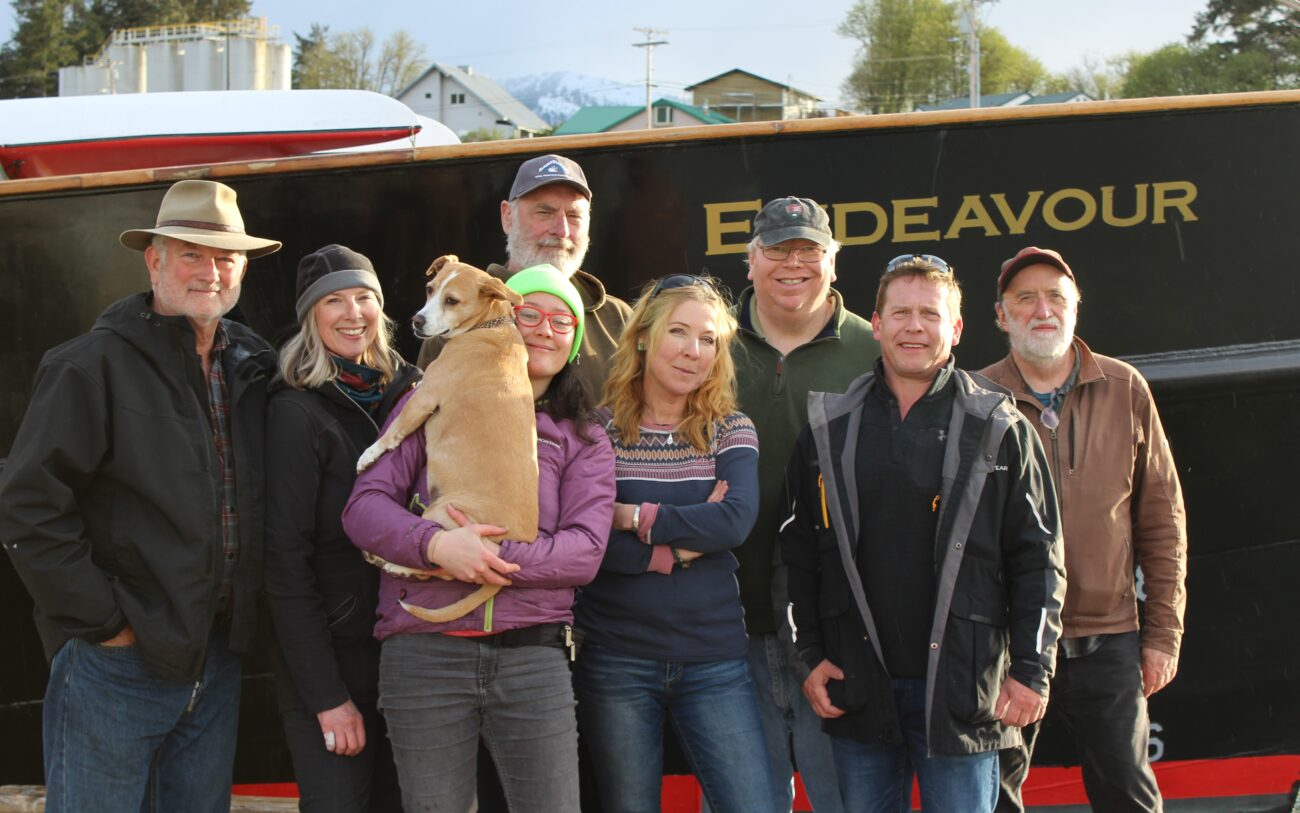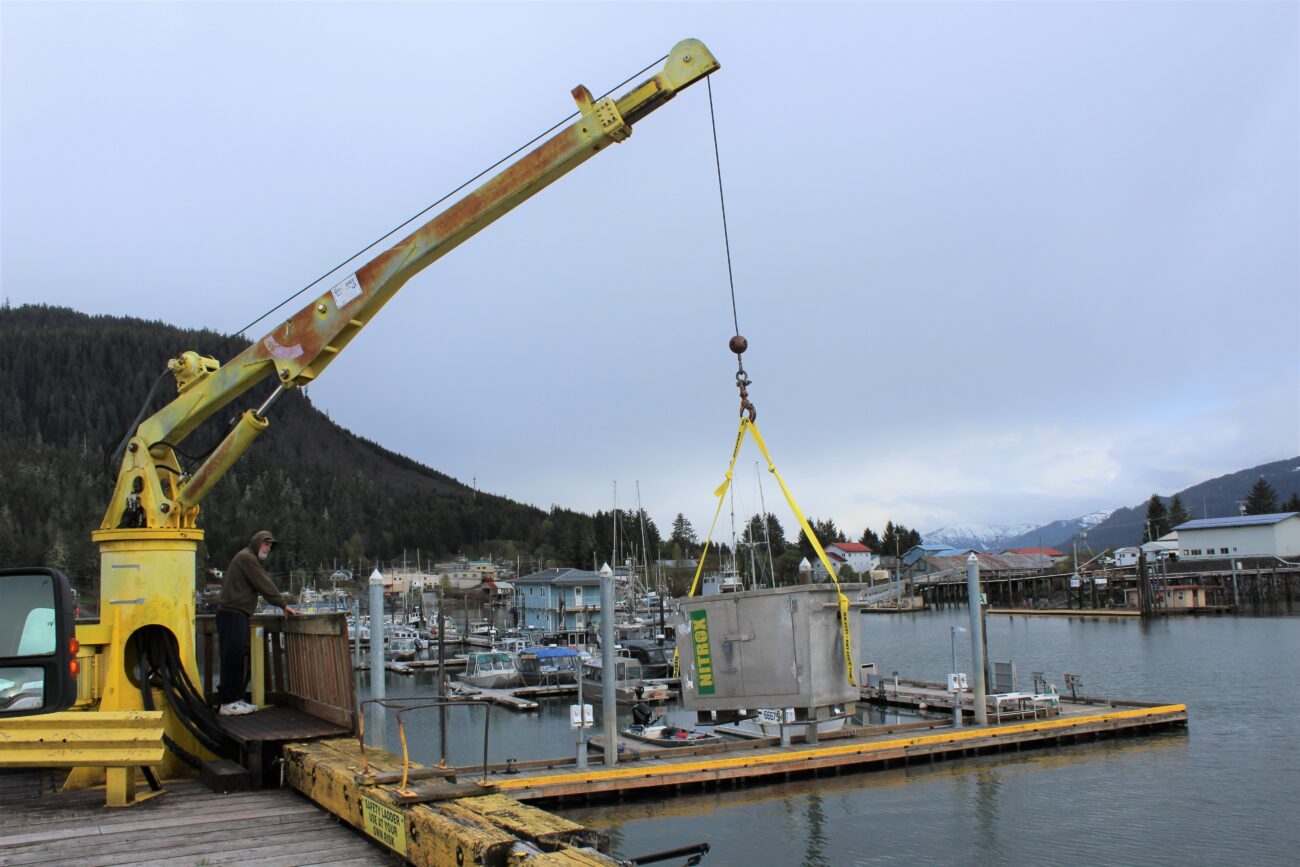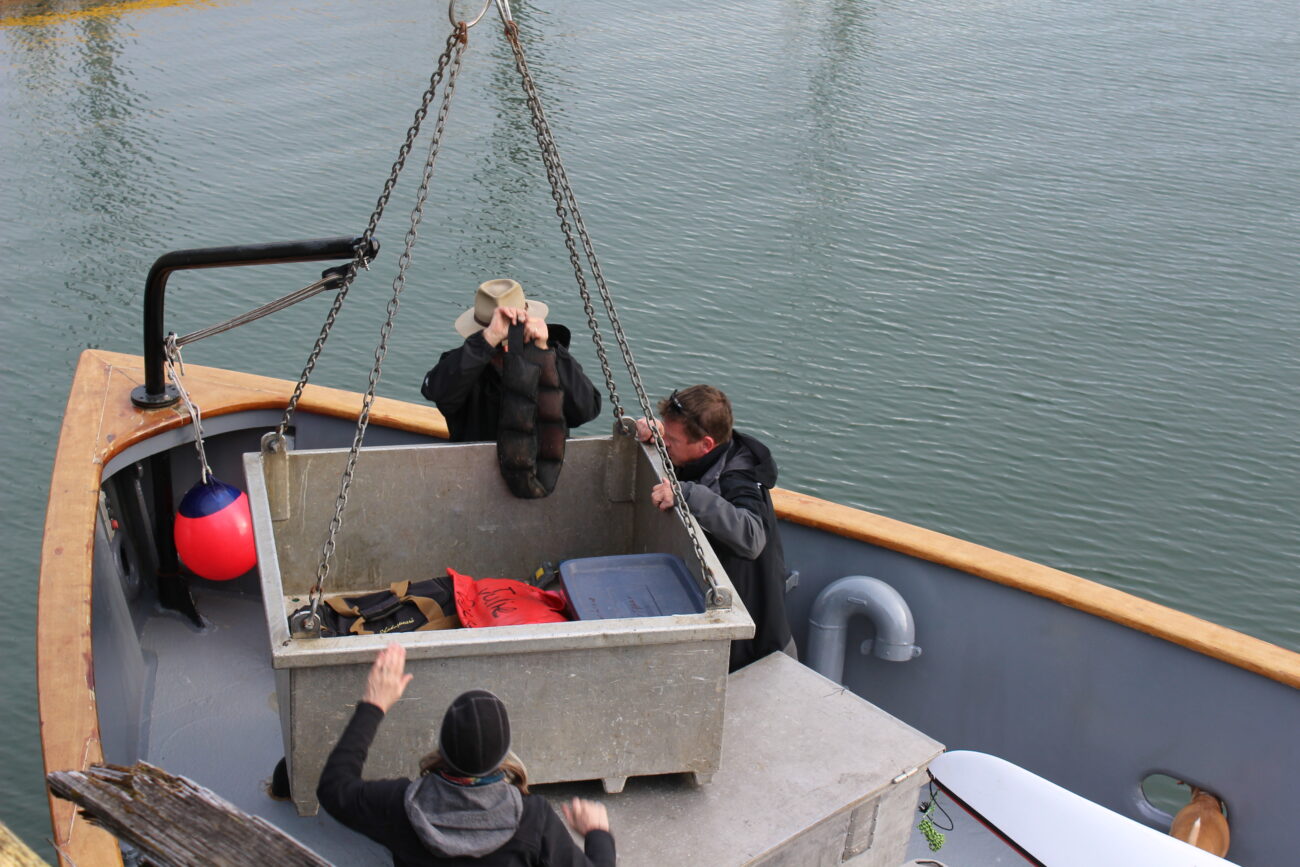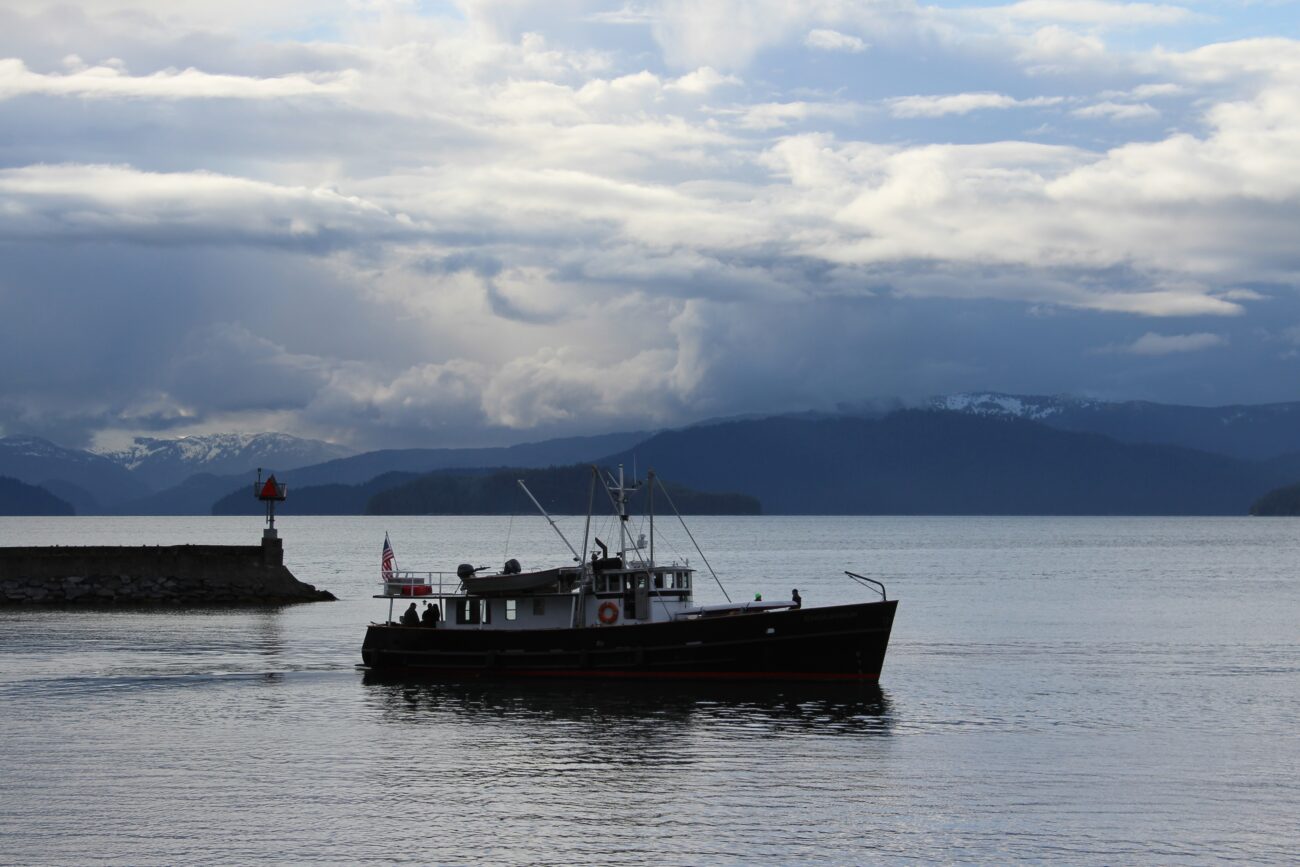
An eight-person crew of scientists, artists and divers are trying to locate the site of one of the deadliest shipwrecks in Alaska history. Expedition members say they hope to find the wreck, and shine a light on the disparity of the tragic deaths. Most of the passengers who died were Asian cannery workers, and to this day, many of their names are still unknown.
It’s a dramatic spring evening in Wrangell: black clouds and sharp shadows in the golden-hour sun. Alaska artist Ray Troll is standing at Reliance Harbor, watching a gray metal box swing from one of the yellow cranes built into the dock. It’s being lowered onto the deck of a 72-foot black and white ship.
“Those are oxygen tanks I believe for scuba diving,” Troll says. “They’re very heavy.”

(Sage Smiley / KSTK)
Troll is a part of an eight-person expedition searching for the wreck of the Star of Bengal, an iron-hulled Alaska Packers Association salmon-packing ship that went down in a storm in 1908 off the coast of Coronation Island here in Southeast Alaska.
The group includes remote sensing specialist Sean Adams, marine archaeologist Jenya Anichenko, researcher Shawn Dilles, visual artist and writer Tessa Hulls, Wrangell commercial fisherman and diver Gig Decker, and a boat dog named Bella. They’re all sailing on the Alaska Endeavour, a former U.S. Army boat built in 1956, owned by Patsy Urschel and her husband Bill.
“I think of this as a right brain left brain, kind of a project,” Urschel says, “So it’s got the scientific aspects of it of discovery. But it has some cultural pieces too.”
For expedition captain Bill Urschel the project stands out from other shipwreck explorations, because of the story of the Star of Bengal.
“This is a special wreck because of the cultural significance,” he explains. “It’s not just a ship that went down. It’s a social system that went down with it.”
All but one of the 111 cannery workers – from China, Japan and the Philippines – onboard the Star of Bengal died on September 20, 1908, when the ship sank. Fifteen of the 36 white crew died.
“I think that’s where that sense of injustice really kicked in for me,” says Tessa Hulls, a writer and visual artist who’s a member of the Endeavour crew looking for the wreck. For the last five years, she’s been working on a graphic novel exploring three generations of her family, from the communist takeover of Shanghai to the United States.
She says that for the white men who died aboard the Star of Bengal, there’s plenty of information — full names, ranks, even insurance payouts to spouses.
“Then you try and find any information about any of the Asian passengers and it’s always ‘And about 100, Orientals, Asiatics, or “Word I’m not going to say,”’ you know, they get so lumped together,” Hulls continues.

(Sage Smiley / KSTK)
There are conflicting reports about how exactly the Star of Bengal went down in 1908, and what the ‘abandon ship’ looked like, but some first-hand accounts tell of the mates and masters of the vessel – all white – leaving the ship without freeing the cannery workers who were locked in the ship’s forward hold. She says the story of the wreck says a lot about Asian people’s struggles throughout America’s history.
“It’s this incredible microcosm that tells us about a century of how Asian-Americans were first coming to this country, and what the practices were with them being migrant workforces,” she says.
In all likelihood, Hulls says the Endeavour crew will never be able to find the names of all of the Asian cannery workers who were killed when the Star of Bengal went down.
“But I think telling the story of why we can’t find their names is the closest that we’re gonna get to justice on this,” Hulls continues.
Marine archaeologist Jenya Anichenko says the crew hopes to locate and authenticate the wreck of the Star of Bengal, and if possible, bring back one or two small artifacts. She says she’s excited to be a part of a project of such great importance to the community of Wrangell, and one with historical significance.
“A lot of times in the case of shipwreck projects in Alaska, there is always a strong community source beginning and the group of enthusiastic individuals who care for the place and history,” Anichenko explains, “And professional archaeologists, if they come into the picture, come as a secondary step.”
In this case, the enthusiastic community connection is Gig Decker. He’s a Wrangell commercial fisherman and diver who believes he found the wreck of the Star of Bengal more than three decades ago, and has been working ever since to research and pique interest in the story of the wreck.
“The ship was from Wrangell, they worked here, and they’re a part of my industry,” Decker says, “And I feel an obligation. So, that’s what was really important to me is just to get the story elevated to the level it should be.”

(Sage Smiley / KSTK)
Already, there’s a place set out at the Wrangell Mariners’ Memorial to honor those who died in the wreck of the Star of Bengal, in large part thanks to Decker.
For Troll, who calls himself “a connector” and brought much of the 8-person crew together, the mission to find and authenticate the wreck is about respecting the humanity of the victims of the sinking, who have since become victims of history.
“There were certain people that were – their humanity was respected and others it was total disrespect,” Troll says. “I hope that what we’re doing here is maybe trying to bring that respect and, and to honor them in some way.”
The journey of the Endeavour and its eight-person expedition crew started Friday morning (May 6) at the old APA cannery site – about where Wrangell’s airport now stands. From there, it traces the 82 miles out to Coronation Island – the same route as the Star of Bengal, where they’ll spend a week documenting their efforts to find its wreck.
Get in touch with KSTK at news@kstk.org or (907) 874-2345.












